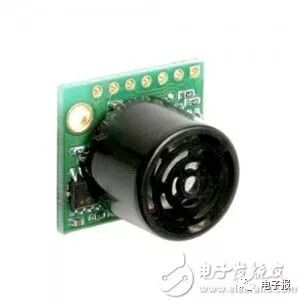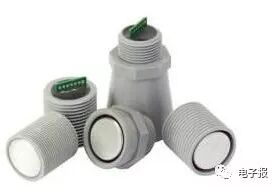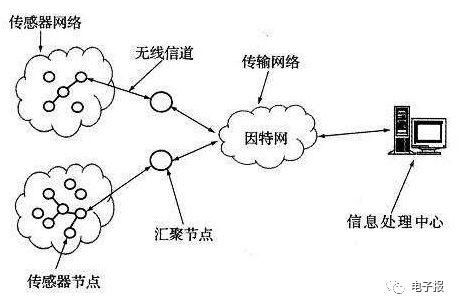With the advancement of technology, the use of wireless networks is becoming increasingly popular. Wireless Sensor Networks (WSN) allow for remote data collection for review. We have previously written about the Internet of Things (IoT), which is a real-world application. In this article, we will detail WSN technology, its relationship with IoT, the industries benefiting from wireless sensor networks, and how ultrasonic sensors fit into your wireless sensor network.What is Wireless Sensor Network (WSN) Technology? A Wireless Sensor Network (WSN) is a distributed sensing network composed of a large number of inexpensive micro-sensor nodes deployed in a monitored area, forming a multi-hop self-organizing network system through wireless communication. Its purpose is to collaboratively sense, collect, and process information about the perceived objects within the network coverage area and send it to observers. The three elements of a wireless sensor network are sensors, perceived objects, and observers. At its end, there are sensors that can perceive and inspect the external world.What does a Wireless Sensor Network Monitor? Temperature, sound, pressure, and more.What is the difference between Wireless Sensor Networks (WSN) and the Internet of Things (IoT)? Wireless Sensor Networks sound very similar to the IoT in applications. WSN is a part of the IoT domain. To use a metaphor, in the IoT, sensors are likened to the hands, fingers, eyes, and ears of the IoT. Sensors need to connect to the IoT platform to convey the information they collect. Wireless Sensor Networks (WSN) serve as a bridge to the digital world. Through cloud services or databases, the IoT acts as a hub, using all collected data to develop meaningful interpretations.Industries Using Wireless Sensor Networks and IoT Smart Cities Wireless Sensor Networks enable sensors to form localized IoT networks, exchanging and obtaining information in real-time, ultimately aggregating into the IoT, forming an important source of information and foundational applications for the IoT. Smart cities utilize information and communication technology to sense, analyze, and integrate key information from the core systems of urban operations, thereby intelligently responding to various needs, including public welfare, environmental protection, public safety, urban services, and commercial activities. For example, smart parking is a solution for monitoring urban parking spaces; waste management allows for monitoring the garbage levels in containers, optimizing routes, saving labor costs, and reducing vehicle emissions; monitoring traffic congestion to optimize walking and driving routes; smart lighting can achieve adaptive lighting in streetlights based on weather conditions. Based on the current development status of smart cities in our country, we provide two corresponding ultrasonic sensor solutions.
The Ultrasonic Sensor – MB1004 is a proximity sensor specifically designed with high and low-level alarm signal outputs, with a measurable range of up to 213cm, suitable for pedestrian detection, parking detection, etc. When a pedestrian enters the detection range, the MB1004 outputs an alarm signal that changes from low to high. It also has the capability to output the specific distance to the target via RS232. The MB1004 is a very low-cost human detection ultrasonic sensor. The Garbage Bin Ultrasonic Sensor – MB7139 is a weather-resistant ultrasonic sensor used to detect the capacity of garbage bins. This sensor is our best recommended sensor for testing inside garbage bins. It features high output sound power with continuously variable gain, real-time automatic calibration, and noise suppression algorithms, effectively achieving noise-free distance readings.Smart Metering Wireless sensors are used to collect monitoring parameters such as motor temperature, current, and liquid level in oil tanks, as well as the start and stop operations of oil wells. If wired transmission is used, there are significant difficulties in wiring. Therefore, the wireless sensor network connects the monitored data to the internet via GPRS, allowing the monitoring station to understand the monitoring situation of the oil station through web browsing. To better measure the liquid level in tanks, we provide the Liquid Level Ultrasonic Sensor – MB7389, specifically designed for measuring oil and water. This sensor is a cost-effective solution with an accuracy range, low voltage operation, space-saving design, low cost, and IP67 weather resistance. The HRXL-MaxSonar-WR sensor line provides high precision and high-resolution ultrasonic proximity detection and ranging in air. This sensor line features 1mm resolution, target size, and operating voltage compensation. To improve accuracy and better reject external noise sources, it includes internal temperature compensation and optional external temperature compensation. The HRXL-MaxSonar-WR/WRC models are available in 5-meter or 10-meter models. This ultrasonic sensor can detect objects from 1mm to 30cm. Objects beyond 30cm are typically reported as 30cm. The interface output format is pulse in RS232 (MB7360 series) or TTL (MB7380 series), width, analog voltage, and digital serial. Factory calibration is standard.Smart Agriculture WSN is particularly suitable for production and scientific research in the following areas. For example, monitoring temperature, humidity, and light in greenhouse planting, analyzing and measuring the growth patterns of valuable economic crops, and high-quality grape breeding and production can greatly assist rural development and increase farmers’ income. By using WSN to build an automatic monitoring system for agricultural environments, a set of network devices can complete data collection and environmental control for wind, light, water, electricity, heat, and pesticides, effectively improving the degree of intensive agricultural production and enhancing the scientific nature of agricultural planting. Sensor applications include: Agricultural drones (mapping, planting, crop monitoring, irrigation) Agricultural robots (focused on planting, weeding, fertilizing, and harvesting) Livestock monitoring (health and welfare, feeding) The drone ultrasonic sensor MB7052 is an ultrasonic sensor with an IP67 protection rating, capable of preventing dust ingress and can be briefly submerged. Encased in PVC material, it has a certain level of corrosion resistance. In outdoor environments with noise interference, it can effectively eliminate noise and detect maximum target distance information. The sensor’s resolution can reach 1cm, with a measurement distance of up to 7.65 meters. Therefore, it is a low-power product suitable for outdoor environments, such as drone systems. At the same time, it has also been widely used in battery-powered IoT smart devices.

With the continuous development of wireless networks, Wireless Sensor Networks and the Internet of Things have the potential to transform more industries, including manufacturing, agriculture, supply chains, and infrastructure. As a result, there is increasing attention to this issue to make it a more adaptable solution.
◇ Wang Min, Zhejiang